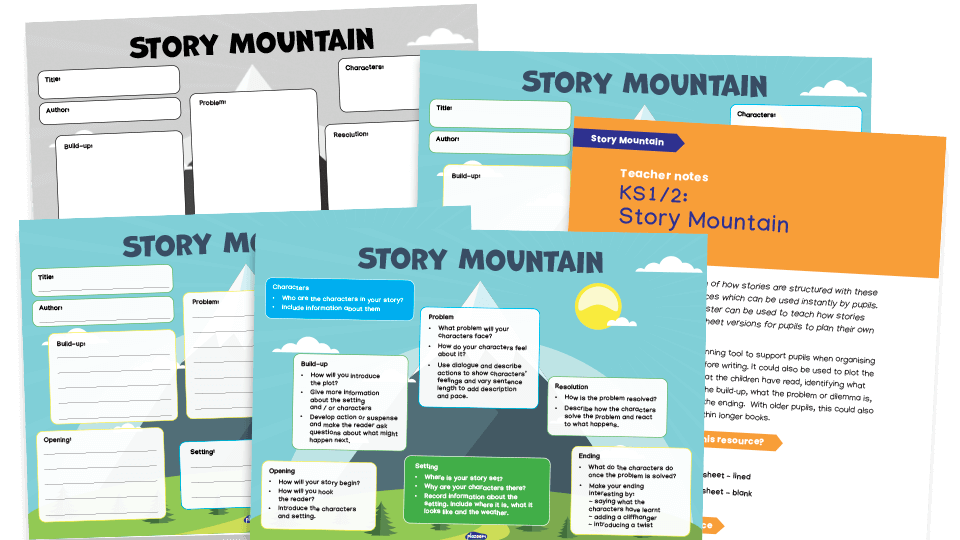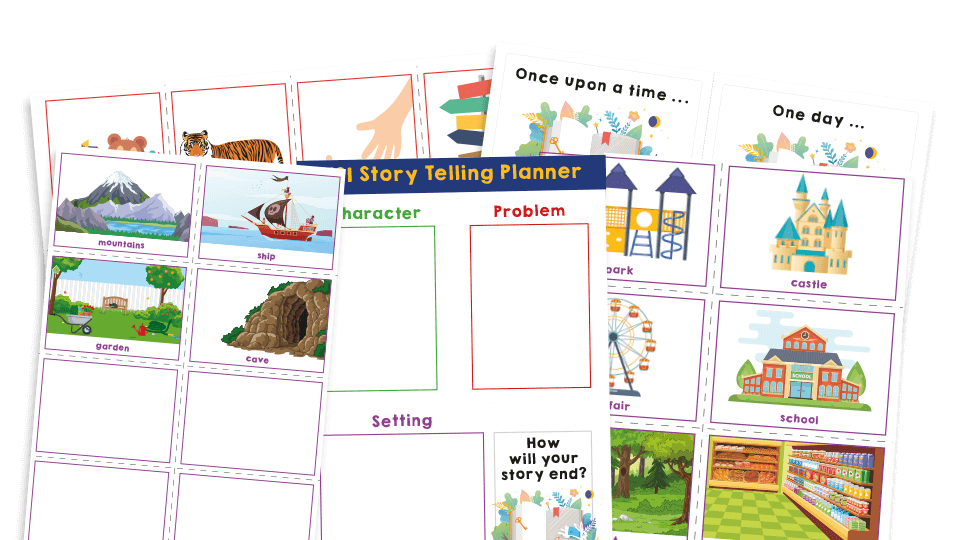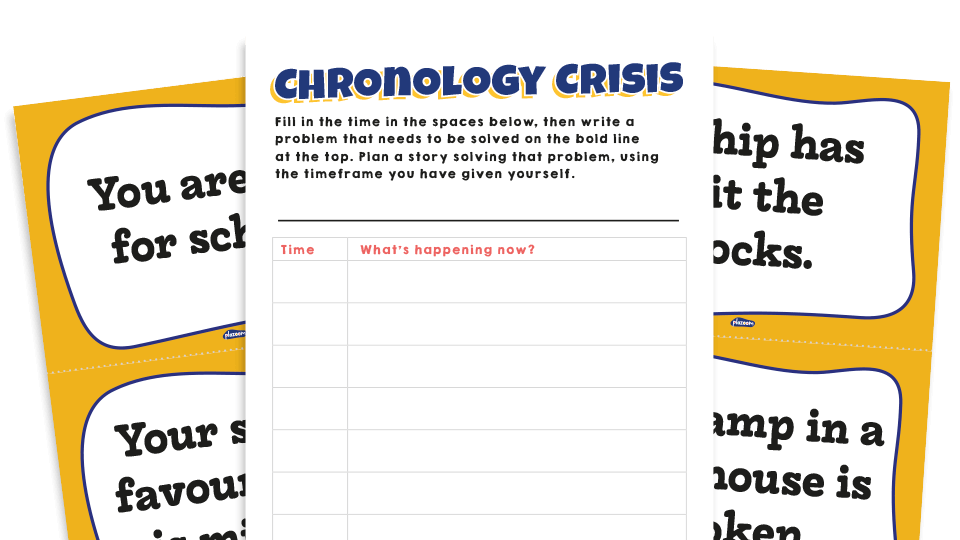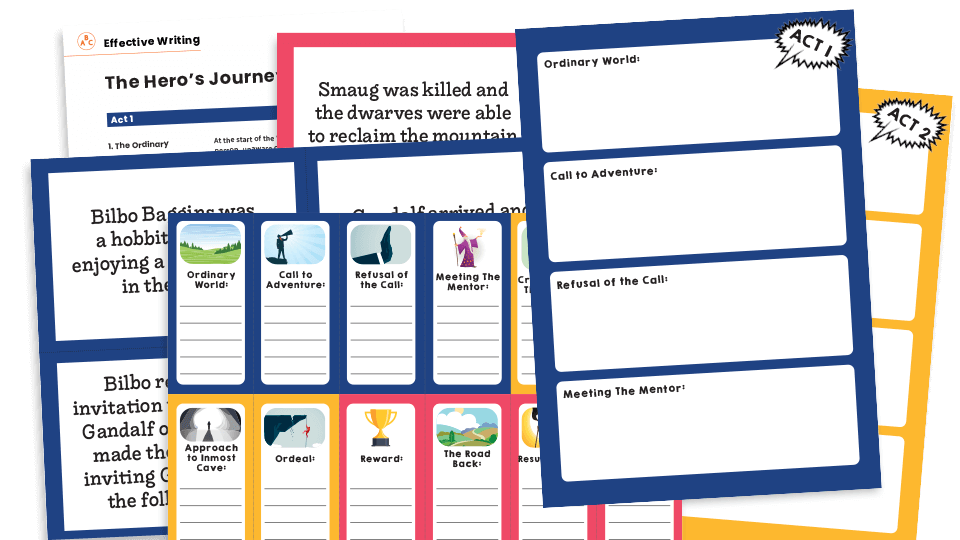Helping children to plan their stories effectively can transform chaotic bursts of creativity into well-structured, engaging tales. One of the best ways to guide them up this creative peak is by introducing the ‘story mountain’, explains teacher Sue Drury…
Writing a story should be like an enjoyable journey. You should know where you’re starting and where you’re going to finish. You should also plan some interim destinations along the way. Precisely how you get to each staging post is up to you. You might even be partly led by your characters.
Nevertheless, you need to start with a plan. This is something that is especially important to drill into your pupils. Children tend to love telling or writing stories. However, their instinct is to launch straight into each new tale with unbridled enthusiasm.
If you’ve ever had the misfortune to hear or read a child’s unplanned story, you’ll know exactly what we mean.
Here are a few tips to help ensure you won’t be wearing a painfully fixed smile or propping your eyelids up with matchsticks next time you encounter an enthusiastic young storyteller...
Why use story mountain?
As with so many things in life, there are plenty of ways to plan a story. Different approaches often suit particular genres and it helps to pick and choose accordingly.
Even so, a story needs a beginning, a middle and an end. To expand this a little further, many stories follow the ‘story mountain’ approach. This is where the dramatic tension of the plot starts low, then climbs steadily to its apex before returning, more or less to normality – sea level, if you like.
Depending on the particular story mountain template you use, this journey is often broken into five stages. These are:
- opening (where you introduce the characters and setting)
- build-up
- problem(s)
- climax
- resolution
Use our free story mountain poster and worksheet versions to help pupils plan their own narratives.

Early steps with familiar stories
A good way to introduce young writers to the idea of story structure is through oral storytelling. This also addresses those objectives about saying aloud what you intend to write.
We have an attractive set of storytelling cards for Key Stage 1 pupils to help them spark these discussions and take their first steps along the road to effective planning.
There are even some blank ones to allow pupils to come up with their own characters, settings and so on.

Story planning resources
The importance of rehearsing your ideas before you write does not diminish when the pupils reach Year 3. This is despite the expectation for them to start putting plans down on paper.
That is why we offer storytelling cards for LKS2 children as well. These offer suggestions as to what might be happening at any of the stages on the story mountain. Use them as part of a class discussion or put them on display as a constant reminder.

Use prompts for creative writing exercises
One of the main pitfalls of pupils’ planning is the temptation to blur the lines between the plan and the story itself.
To overcome this, advise them to make notes, preferably as bullet points rather than full sentences. Also, provide planning templates with prompts to make them think clearly about each stage of the story.
As well as breaking down the story into its main parts, it could also pose relevant questions about what is happening and why.
Just make sure that they don’t confuse the story stages with paragraphs. It might be that the two concepts overlap when they are novice writers. However, especially as they get older and produce more, they will need to understand the difference.
Story mountain structure can be flexible
A story plan is not a legally binding contract. Although you might not state it in those terms to your pupils, it's appropriate to tell them that sometimes your ideas change while you’re in the process of moulding a plan into a story.
Just urge them to adapt their plan accordingly so that it still follows a coherent plot.
Famous story structure
It is often said that there are seven basic plots in literature:
- overcoming the monster
- rags to riches
- the quest
- journey and return
- comedy
- tragedy
- rebirth
You can unpick what these mean at your leisure; the point is that different plots have different key ingredients.
It therefore makes sense for writers to adapt their planning style accordingly and not feel they have to struggle up and down the story mountain in the traditional sense.
We offer a variety of resources, complete with planning sheets, that will help pupils appreciate different approaches to planning, depending on the genre of the story they are writing.
For example, our ‘Timing a Plot’ pack encourages pupils to focus on the chronology of the key events in their story.

Our ‘Hero’s Journey’ pack provides a 12-stage template for planning a story in the style of myths, legends and fantasy adventures.

We even have a resource for creating a historical story set in a particular time and place, namely the wild west. Yippee-i-ay!

The end
Make sure that your pupils do not underestimate the importance of the resolution. The story mountain idea can really help here. It's a very visual illustration of how things return to normal.
Loose ends will need to be tied up in a way that satisfies the reader. There should also be some indication as to how life will carry on for the characters.
Incidentally, the protagonists might well live ‘happily ever after’ but this is never an acceptable ending except for a traditional tale.
If you’re feeling really draconian, ban the words ‘The End’. If it is not clear to the reader that the story has finished, you could argue that they have not written a good enough resolution.
We hope you now feel fully equipped to help your class to tackle the spectacular peaks of the story mountain. Just remember, it might take what seems like extra effort at the beginning, but it will be well worth it in the end.
Sue Drury qualified as a primary teacher in 1999. Teaching pupils from Year 1 to Year 8, she has held a variety of positions including maths and English subject leader, year leader, and assistant headteacher. Sue has mentored students and NQTs, offering guidance and advice using her years of experience. She created many of Plazoom's literacy resources.